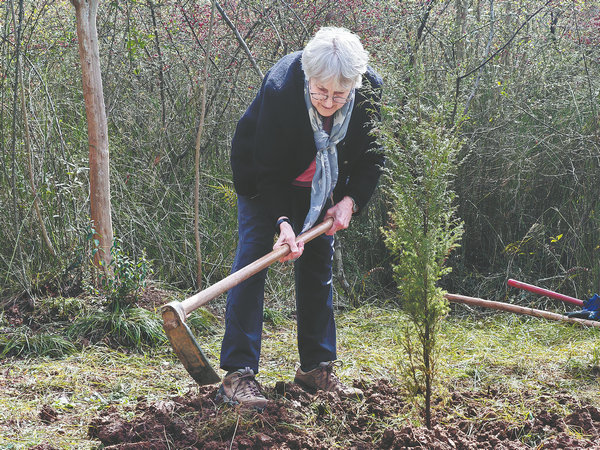

Hope Justman, an 81-year-old American, has just completed her 24th trip along the shudao, an ancient road system in Sichuan province that dates back over two millennia.
"I'm a hiker by accident, because the only way to see it is to hike it," she says.
Running for around 1,000 kilometers, the shudao (the roads of the Shu state) winds through rugged mountains and crosses tumultuous streams, connecting present-day Sichuan province with the northern Guanzhong Plain, which was once the heartland of ancient China.
Justman's connection to the ancient road system dates back to her college days. As part of a course on Chinese literature and art, she visited an exhibition in Boston, where the painting, Emperor Minghuang's Journey to Sichuan, captured her attention.
Huge mountains, verdant trees, mountain streams and winding plank roads gave the painting depth and beauty, and a certain sense of mystery. "I was particularly intrigued by the plank road skirting sheer mountain peaks in the background," she says, adding that when she found out that the road actually existed, she knew she had to come to China to find it.
In 1997, after reading almost every English travel book, she finally found the shudao with the help of local guides. "It was old, dignified and beautiful, just like in the painting," Justman says.
Since then, she has made a pilgrimage to the shudao, most years, and has hiked more than 400 km of it so far.
In addition to sharing her photos of the ancient road network with friends and family in Philadelphia, Justman also created a website and has written a book about it. In 2015, a friend shot a documentary about the shudao and uploaded it to YouTube, earning the attention of like-minded people, some of whom asked to join the American on her walks.
Last month, she took some of those friends to the Cuiyunlang section of the shudao, which is in Jian'ge county in Guangyuan city. It is lined by ancient cypress trees with an average age of 1,050 years, the oldest tree being approximately 2,300 years old.
Presently, the Cuiyunlang section is home to 7,803 ancient trees, 7,778 of which are cypresses. It is the most extensive and populous group of ancient trees lining a man-made pathway in China.
"I could have been walking in the Tang Dynasty (618-907), so I kind of feel that I traveled back in time, and that was the great appeal to me. Ancient people passed by those trees, and I'm passing the same ones. It's really amazing," Justman says.
Something else that amazes her is that the tradition of planting and protecting cypress has been passed down from generation to generation. From ancient to modern times, the Chinese have kept records of the protection of ancient trees. Today, each has a QR code, which can be scanned to find out how it is growing and its age.
In 2015, Justman planted a sapling in the Cuiyunlang section. This year, she and her friends planted two more, and have promised to meet again there next year.
"Most of me belongs to the United States. But the cypress trees I planted make me feel that a part of me still remains in this ancient place, and I'm so glad," she says.